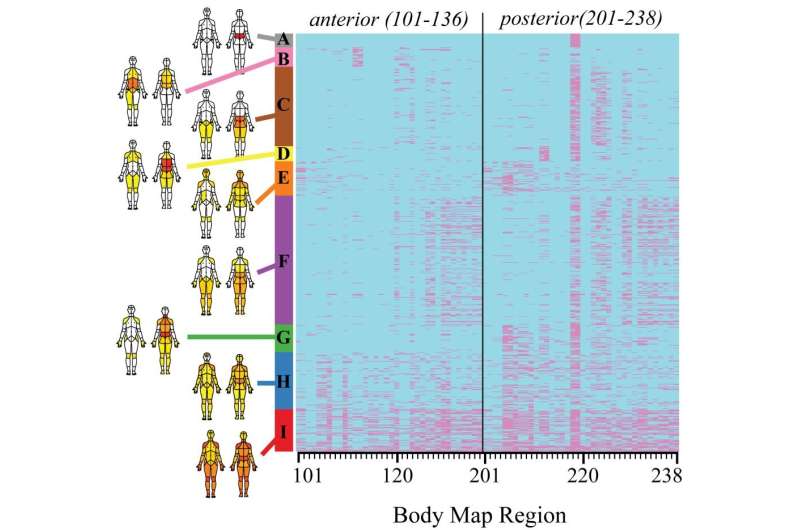
Pain distribution as reported on a body map, on its own, can be used to assign patients to distinct subgroups that are associated with differences in pain intensity, pain quality, pain impact and clinically-relevant three-month outcomes, according to a new study published this week in the open-access journal PLOS ONE by Benedict Alter of University of Pittsburgh, US, and colleagues.
In clinical practice, the bodily distribution of chronic pain is often used in conjunction with other signs and symptoms to diagnose and treat patients. Recent work on fibromyalgia has revealed that clinical pain syndromes thought to be distinct entities may share clinically-relevant features, especially regarding the impact of pain distribution on outcomes. However patterns of pain distribution have not been previously examined in a systematic way as predictors of pain characteristics or outcomes.
In the new study, researchers analyzed data on 21,658 patients seen at the seven pain management clinics of the University of Pittsburgh between 2016 and 2019. All patients completed a pain body map, in which areas of pain are selected on two side-by-side drawings of the front and back of the body, with 74 possible regions of pain. Other information on patients’ pain, health, and outcomes was available in the electronic medical record. Patients were 83% white, 60% female, 22% insured by Medicaid and 10% had at least one comorbidity.
Data from all patients revealed 9 distinct groupings of pain distribution. Demographic and medical characteristics, pain intensity, pain impact, and neuropathic pain quality all varied significantly across cluster subgroups. For instance, the pain intensity of the “Neck and Shoulder” group was less than that of “Lower Back Pain below knee” and “Neck, Shoulder and Lower Back Pain,” while the group with the highest pain intensity consisted of patients with widespread heavy pain, also associated with low physical function, high anxiety and depression and high sleep disturbance. In a subset of 7,138 patients who completed 3-month follow-up questionnaires, subgroups predicted the likelihood of improvement in pain and physical function; those in the “Abdominal Pain” group were the most improved, with 49% self-reporting clinically significant improvements, while those in the “Neck, Shoulder and Lower Back Pain” group were the least improved, with only 37% reporting improvements. The authors conclude that algorithmic clustering by pain distribution may, in the future, be an important facet of the personalization of pain management.
Source: Read Full Article